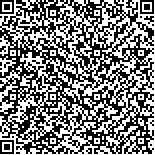| 摘要: |
| 光质是影响藻类生长发育的重要因子。本文旨在研究栽培型条斑紫菜(Neopyropia yezoensis)自由丝状体在不同光质(白光、红光、蓝光、绿光)下生长率、形态、超微结构、色素含量及抗氧化酶活性的差异。结果显示:培养21 d后,白光显著提高条斑紫菜自由丝状体特定生长率和叶绿素a含量,其次是红光和绿光,蓝光最差。和白光组相比,蓝光组藻体藻红蛋白(PE)含量最高,红光、绿光组藻体藻蓝蛋白(PC)含量较高。白光组藻体正常黑褐色,细胞壁最厚。红、绿光组藻体绿色,直径和细胞壁厚度与白光组相近。蓝光组藻体鲜艳红色,直径最小,细胞壁最薄,且超微结构显示类囊体上质体小球数量最多。蓝光照射后,藻体丙二醛(MDA)含量最高,超氧化物歧化酶(SOD)活性最低。研究表明,白光最有利于条斑紫菜自由丝状体生长,其次是红光和绿光,蓝光则有不利影响。 |
| 关键词: 条斑紫菜 自由丝状体 光质 生长 生理指标 |
| DOI:10.11759/hykx20220106004 |
| 分类号:S968.43 |
| 基金项目:国家重点研发计划课题(2018YFD0901502-3、2018YFD0901506-3);江苏省现代农业产业技术体系项目(JATS[2021]393、394、395);水产良种保种(紫菜)项目(2021-SJ-031);南通市项目(JCZ20047) |
|
| Effects of different light qualities on growth and physiological characteristics of Neopyropia yezoensis free-living conchocelis |
|
TIAN Cui-cui1,2, LU Qin-qin1,2, DENG Yin-yin1, HU Chuan-ming1, ZHOU Wei1
|
|
1.Jiangsu Marine Fisheries Research Institute, Nantong 226007, China;2.Protection and Utilization of Agricultural Germplasm Resources in Jiangsu Province, Nanjing 210014, China
|
| Abstract: |
| Light quality is an important factor that regulates the growth and development of algae. The different light qualities (white, red, blue, and green) from illumination by LEDs on growth rate, morphogenesis, ultrastructure, pigments, and antioxidative enzyme activities of cultivated Neopyropia yezoensis free-living conchocelis were studied. The results showed that after 21 days of culture, the specific growth rate (SGR) and chlorophyll a contents of N. yezoensis were the highest under white light (WL), followed by red light (RL) and green light (GL), while they were the lowest under blue light (BL). The phycoerythrin content was the highest under BL, and the phycocyanin content under RL and GL were higher compared with that under WL. Under WL, the conchocelis was normal, dark brown, with a thick cell wall. The conchocelis was green under the RL and GL, and the cell wall was similar to the WL group. The conchocelis color became brilliant red under BL, with a thin cell wall and the largest number of plastoglobulus on the thylakoid. The malondialdehyde content was highest, and the activity of superoxide dismutase was the lowest under BL. These results reveal that WL is the most beneficial to the growth of N. yezoensis free-living conchocelis, followed by RL and GL, whereas BL is disadvantageous for growth. |
| Key words: Neopyropia yezoensis free-living conchocelis light quality growth physiological characteristics |
